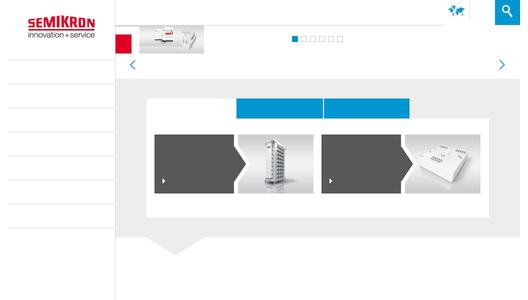Mickey Madsen from Technical University of Denmark, in Lyngby, Denmark for his outstanding work on an 'Efficient and Cost Effective Gate Drive for Resonant Converters Enabling Small Low-Cost Power Converters with long Lifespan'.
The innovation is a novel self-oscillating resonant gate drive for power converters enabling high efficiency at switching frequencies in the very high frequency range (30‐300 MHz). The gate drive constituted by an inductor and the parasitic capacitances of the power semiconductor can be utilized for control of both low and high side switches, as well as for synchronous rectification. The gate drive has been used to implement the world's first discrete half bridge converter operating above 30 MHz. The developed very high frequency switch-mode power supplies will boost LED lighting because it enables 80% reduction in size and weight as well as 50% reduction in costs compared to the corresponding commercial product. Therewith, the innovation will contribute to the energy saving by highly efficient LED lighting.
And on the other hand to
Otto Kreutzer and Alexander Wirth from Fraunhofer Institute IISB in Erlangen, Germany for their innovation on a 'Full SiC DC/DC Converter with a Power Density of more than 140 kW/dm³'.
With the non-isolated bidirectional full Silicon carbide 800V/200kW DC/DC converter power stage for electric and hybrid vehicles a new region of power density has been entered with > 140 kW/dm³ at a switching frequency of 200 kHz. These outstanding results in power density but also in efficiency (98,9%) could be achieved because Mr Kreutzer and Mr Wirth optimised the system in all aspects starting with the choice of SiC MOSFETs in combination with a clever topology where the power is subdivided on six interleaved phases. Latest packaging & interconnection technologies have been applied where the power devices were sintered on custom-made Si3N4 DCB-substrates. Completely new developments of all peripheral components have been made to fully exploit the performance of the wide bandgap MOSFETs, e.g. for the drivers, the highside capacitors assembly with extremely small parasitic inductivity and a special multicore inductor layout.
The traction DC/DC converter is a key power unit in an electrified vehicle used to connect and convert electrical energy between different energy storages, battery charger and drive inverter. Since the whole drive power has to be handled by the converter, highest efficiency is essential, apart from low volume and weight.
The SEMIKRON Young Engineer Award 2015 is given to Mr Marco Denk from University of Bayreuth, Germany for his contributions to the development of an 'IGBT Junction Temperature Measurement within a Working Voltage Source Inverter'.
The junction temperature of an IGBT power module is a key parameter for its optimal operation and for reliability. The developed TJ-IGBT gate driver measures the temperature of the on-chip internal gate resistor by superimposing the negative gate voltage with a high-frequency identification signal. The sensor system enables real-time junction temperature measurement of conventional IGBT power modules during the regular inverter operation. The innovation is using the gate driver for junction temperature measurement which does not require additional contact pads on the power semiconductor module. Therefore, the proposed method is easily applicable also in series production. The integrated junction temperature measurement will enable converters with increased power density and efficiency and especially with improved reliability.
About the "SEMIKRON Innovation Award" and the "SEMIKRON Young Engineer Award"
The SEMIKRON Innovation Award honours outstanding innovations in projects, prototypes, services and innovative concepts in the field of power electronics in Europe. The foundation honours innovations that generate a high potential social benefit and improve energy efficiency, preservation of resources, sustainability and environmental protection.
The award ceremony was held during ECPE Annual Event 2015 in Ismaning near Munich for the first time. The laureates are elected in cooperation with the ECPE European Centre for Power Electronics. The main award is endowed with 10,000 Euro. There is also a young engineer award, endowed with 3,000 Euro, that goes to young researchers under 30 years of age in the field of power electronics.
The laureates are evaluated by an independent jury of renowned research and industry representatives. Applications are available for individuals and development teams. Applicants are required to outline the innovation they created and its expected social benefit.


